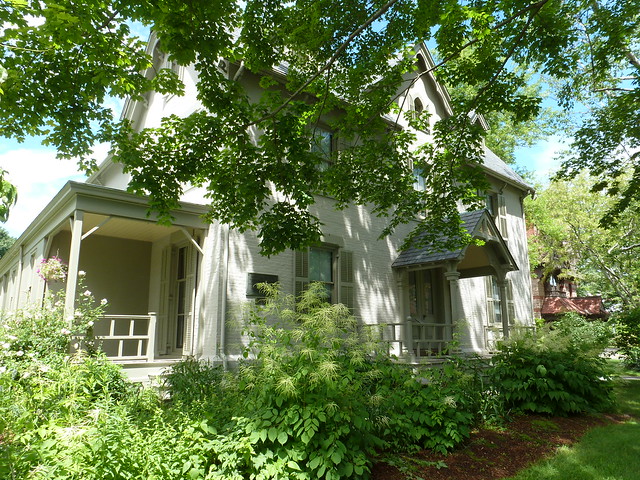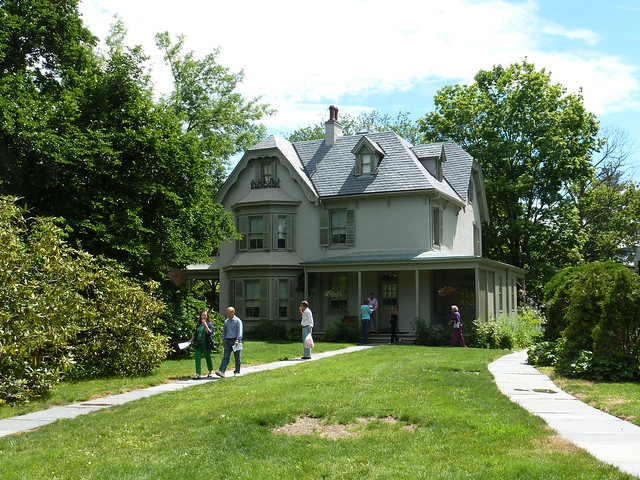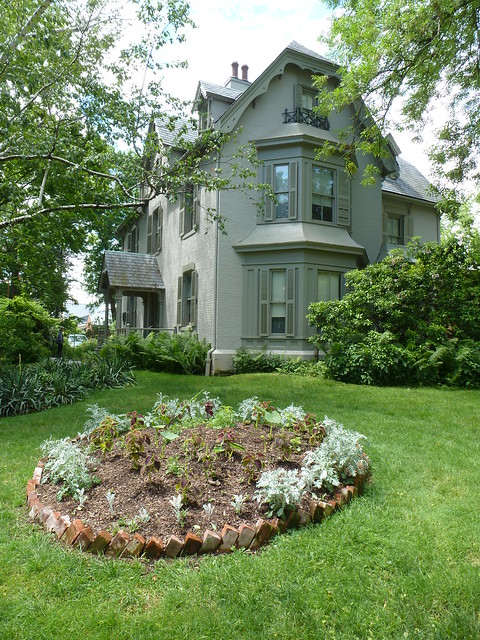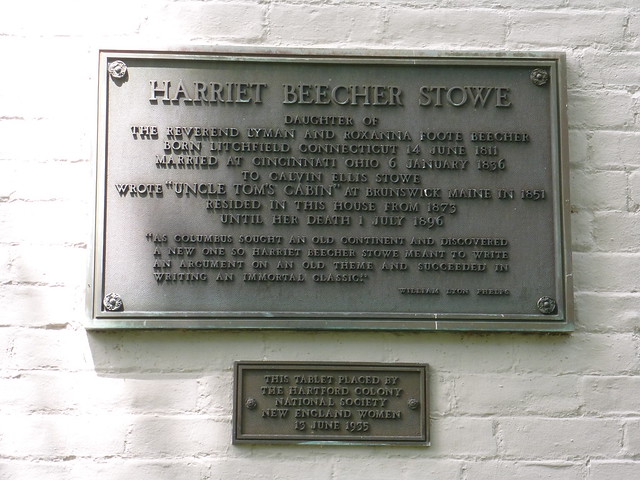For being the third-smallest state in the country, Connecticut certainly has its share of fascinating history, having been home to numerous famous authors, national heroes, and other significant cultural contributors. The impressively lengthy list of participants in this year's CT Open House Day 2013 is a testament to the wide range of museums, historic sites, events, organizations, and experiences our itty bitty state has to offer. I decided to plan a day that would pay homage to both the very well-known and the more obscure of CT's treasures, and I set out on Saturday morning with a couple of friends to see what we could discover.
We arrived at our first site, the Harriet Beecher Stowe Center in Hartford, just after ten o'clock, and the property was already buzzing with visitors ready to see the house and exhibit and to take part in all of the numerous presentations and activities scheduled to take place throughout the day to celebrate not only Open House Day, but also Stowe's 202 birthday. Despite being life-long CT residents, none of us had ever visited the Stowe Center before, so we thought this would be the ideal place to begin our day.
Nestled in the heart of Hartford's famous Nook Farm neighborhood, the CT home of author Harriet Beecher Stowe sits right next door to that of her more famous contemporary, Mark Twain. It was actually Stowe's residence in the area, however, and not Twain's, that provided the spark that led to the creation of the internationally-recognized Nook Farm community. The most prestigious area of Hartford from the 1870s through the turn of the century, the neighborhood was the literary and artistic center of the city, home not only to Stowe (from 1873 until her death in 1896) and Twain (from 1874 to 1891), but also to social reformer Isabella Beecher Hooker (HBS's sister and one of the founders of the National Women's Suffrage Association), actor William Gillette, and journalist and author Charles Warner, among many others.
Harriet Beecher Stowe (1811-1896) was already world-famous as the author of the international bestseller Uncle Tom's Cabin when she moved to Hartford in 1873. She was born about an hour west of Hartford in Litchfield, CT into a family of ministers and social reformers who instilled in her a sense of duty to strive to better the world and make a difference. She married Calvin Stowe, a theology professor, in 1836. Calvin Stowe was an outspoken abolitionist and he and Harriet offered their Ohio home as a stop on the Underground Railroad.
The Stowes relocated to Maine in 1850, and it was there that Harriet wrote Uncle Tom's Cabin; or, Life Among the Lowly in response to the passing of the Fugitive Slave Law that same year. The story originally appeared serially (from 1851-2) in The National Era, an abolitionist Washington newspaper, and was only intended at first to be three or four parts long. The popularity of Stowe's early installments, however, prompted the extension of the run into more than 40 parts. In 1852, the installments were collected and published as a novel in a two-volume format, and Stowe's place as an international celebrity was assured. In 1862, just after the Civil War began, she was introduced to President Lincoln and her son reported that the President's response was, "so you are the little woman who wrote the book that started this great war."
When Calvin Stowe retired from his teaching career in 1864, he moved his wife and twin daughters to Hartford. They purchased this Victorian Gothic brick house in 1873, and Harriet Beecher Stowe set out to create in it a domestic retreat that represented her simplistic ideals and her love of nature. Here, she continued writing (she published more than thirty works throughout her life, though none of course ever rivaled the success of her first novel) until her death in 1896.
The house was built in 1871. After Stowe died, it was sold outside of the family, but only remained so for about three decades. In 1924, Stowe's grandniece, Katherine Seymour Day, purchased the house and lived there for more than 40 years, working to restore it and eventually donating it as a museum to help found the Harriet Beecher Stowe Center. It was Day's influence, too, that saved the next-door Mark Twain house from demolition, thus preserving through her efforts monuments to CT's two most extraordinary literary figures.
Part of Day's restoration and preservation efforts included the collecting of Stowe and Beecher family heirlooms, furniture, pictures, books, and other personal items, and bringing them back to Hartford; much of what is in the house now was owned and used by Stowe or her family. Photographs and Stowe's own meticulous accounts have allowed the rooms to be restored to their exact appearance during her residence here. Walking into the house now is like walking into a time capsule of the 1870s and 1880s, and the museum did a beautiful job presenting both Stowe's home and her life during the house walk-through. Because we visited on Open House Day, we were only able to visit the ground floor of the house, so I will definitely be returning in the very near future to see the remainder of the house and experience the complete guided tour.









No comments:
Post a Comment